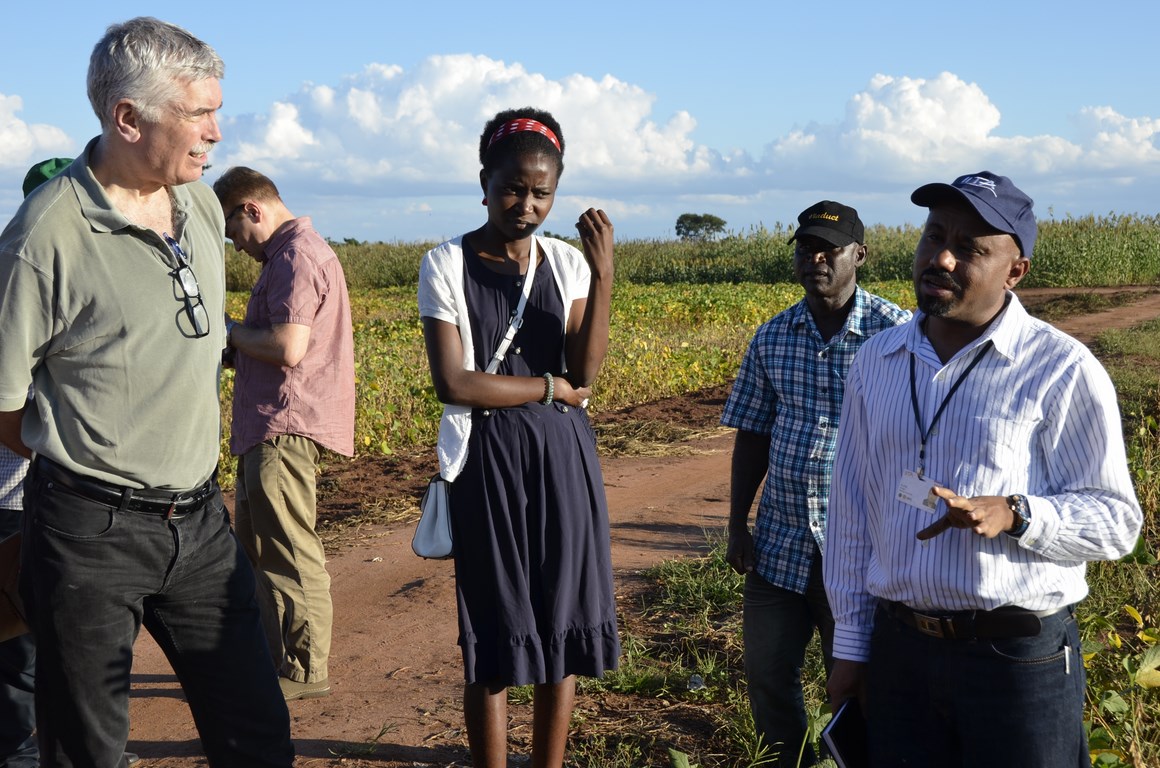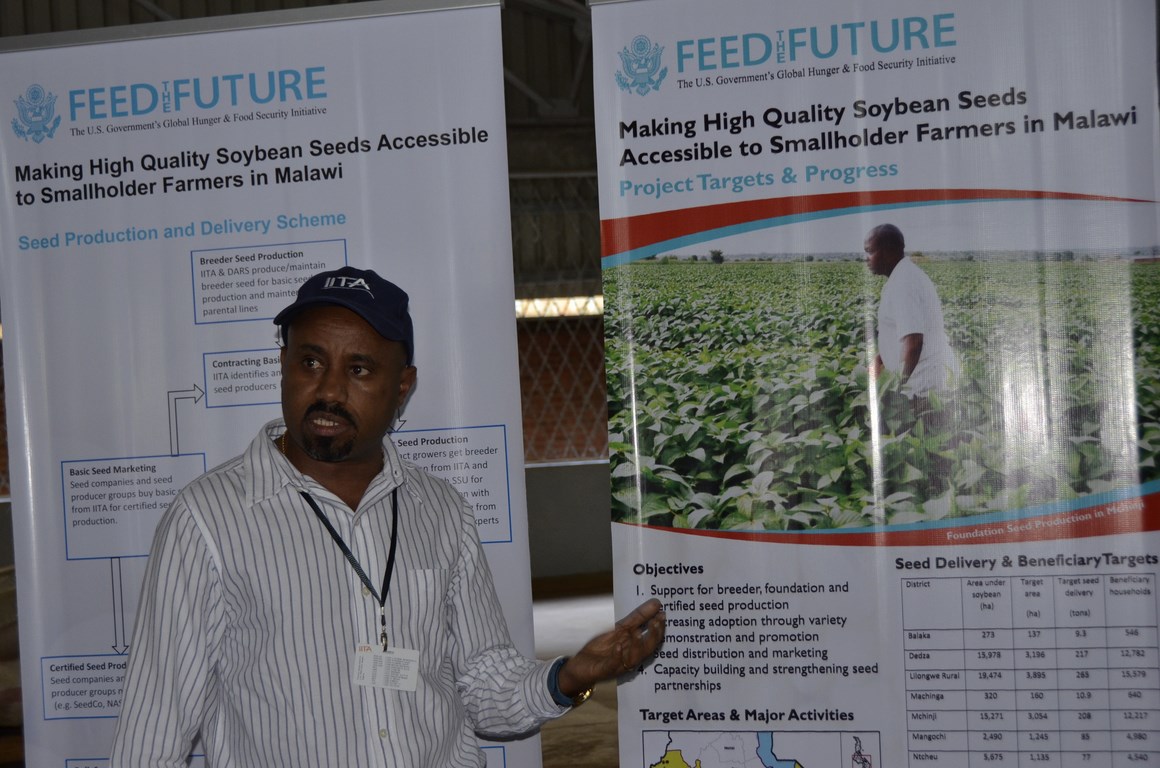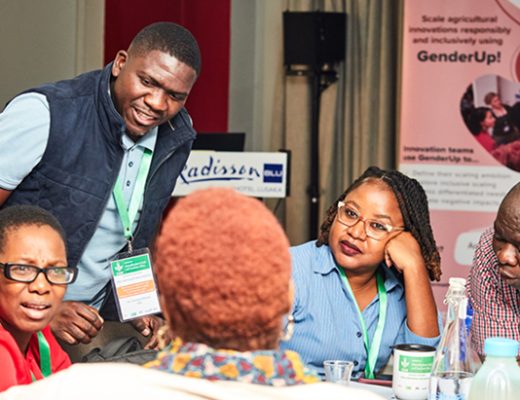The consortium of CGIAR Centers implementing the Feed the Future project Malawi Improved Seed Systems and Technologies received a vote of confidence when a visiting team from the USAID headquarters as well as USAID/Malawi mission expressed their satisfaction after witnessing the work the partners are doing in the field.

Dr Rob Bertram (left) listening to a presentation by Dr Alene Arega of IITA on a soy demonstration field.
The USAID team, which was led by their Chief Scientist, Dr Robert Bertram, visited IITA’s soybean trials and breeder seed production as well as various other trials and demonstration plots at Chitedze Research Station.
The visitors had a chance to listen to presentations and also to appreciate more of the consortium’s work when they visited a pavilion at Chitedze Research Station where members showcased some of their achievements through displays.
Speaking later, the USAID team leader was visibly impressed. He described the work of the CGIAR Consortium in Malawi under the project as ‘exciting’.
“I am really excited to see the consortium taking shape,” said Dr Bertram. “The work the consortium is doing will not only address the critical shortage of improved seeds but will also bring research to the farmers. The presentations I have heard show that the system they are using is sustainable and will help in boosting food production in Malawi.”
Dr Bertram also added that the consortium was filling a gap in a sustainable way that empowered all the national partners and would benefit farmers and communities due to the increased availability of seeds of improved varieties.
He explained, “I am so happy that the USAID mission here in Malawi has reached out and worked with the CGIAR Centers to make a true consortium. You can sense the excitement and feel how much the Centers like being part of the group effort……this is at the heart of what we are looking for in terms of helping smallholder farm families make the transition so that they move out of poverty.”
The project will use public-private partnerships and revolving fund approaches to develop a sustainable soybean seed production, marketing, and distribution system with complementary integrated crop management practices to enhance the farmers’ access to improved technologies and increase their adoption.
Breeder seeds will be produced by the Department of Agricultural Research Services (DARS) and IITA to support the public, private, and community-based seed producers and will be fed into a network of certified seed producers. These include small-scale seed enterprises and community-based seed outgrower schemes to produce the targeted quantities of certified seeds.
The project has already made some progress, which also impressed Dr Bertram and his team. “I have seen a lot of highly resilient crops during the field visit such as drought tolerant maize that looked really good compared with the non-drought tolerant varieties.”
“This will help to drive diversification because if people are more confident about their maize yield, they will put some of their land to other crops. I was really excited and would love to see this partnership emerging at the grassroots level in the CGIAR system,” he said.
Responding to questions by the visiting team on IITA’s partnership with local organizations, Dr Arega Alene, IITA’s Country Representative, said they were working with the National Smallholder Farmers Association of Malawi (NASFAM), a reputable organization with vast experience in community-based seed production.
“We have NASFAM as our partner in this project because they have the structures and experience in community-based soybean seed production through well-trained local seed producer groups. They have large and elaborate agricultural extension machinery countrywide and farms that would effectively support the soybean technology dissemination system.”
“So far, the relationship has been good as we have managed to implement the project according to agreed plans,” he explained.
On the demand for soybean on the local market, Dr Arega said, “I wouldn’t say that sufficient demand for seeds has been created yet. Limited effective demand for seeds has always been a major constraint and this is largely why the private sector has little interest in the legume seed business in general. We have taken it upon ourselves to create demand by using different mechanisms such as field demonstrations and related extension campaigns. These are not only intended to create awareness of the availability of different varieties with many different attributes but also to demonstrate to farmers the benefits of improved varieties and complementary agronomic practices.”




No Comments